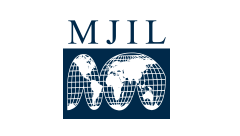Abstract
This Article is organized in the following manner: Part II introduces the OECD Secretariat's proposed pricing mechanisms based on the IPC antidumping model, while Part III provides for a critical evaluation of the proposed pricing mechanisms. First, Part III explains the reasons why the IPC antidumping model does not fit the shipbuilding industry due to the unique characteristic of the shipbuilding market. This Part thereafter demonstrates why the antidumping regime, as well as the proposed pricing mechanism, cannot be justified under the competition policy standards. While criticizing defenses for the current antidumping regime, Part III demonstrates why the proposed pricing mechanism may result in overregulation and thus is inconsistent with the OECD Council's Mandate. Part IV shows why candidates for market-distorting pricing practices-for example, predatory/strategic dumping-are unlikely to occur in the shipbuilding industry, and therefore there is no strong need to have alternative mechanisms. While reconfirming that antidumping-type pricing disciplines are inappropriate in the shipbuilding industry, this Part cautiously introduces a competition law model and modified pricing mechanisms to directly target predatory/strategic dumping or other types of market-distorting pricing practices. Part V concludes with a brief summary of the foregoing analysis.
Recommended Citation
Seung W. Chang,
Like Father, Like Son: A Progeny of the Antidumping Model for the Shipbuilding Industry,
24
Mich. J. Int'l L.
807
(2003).
Available at:
https://repository.law.umich.edu/mjil/vol24/iss3/6

